How to Write a Letter in Microsoft Word: A Simple Guide

Adding a Letterhead
Including a letterhead at the top of your Microsoft Word document can help make a strong first impression, establish your identity, and give your letter a more professional look. While letterheads are typically used for business communications, you can also use them for personal letters depending on the context. For instance, when writing a job application letter, I like to include a photo and a simple color strip to add a touch of professionalism. Similarly, adding a letterhead can convey authority in situations like writing a reference or complaint letter.
To create a letterhead, double-click anywhere in the header area of your document, then check the Different First Page option in the Header and Footer tab to ensure the letterhead appears only on the first page.
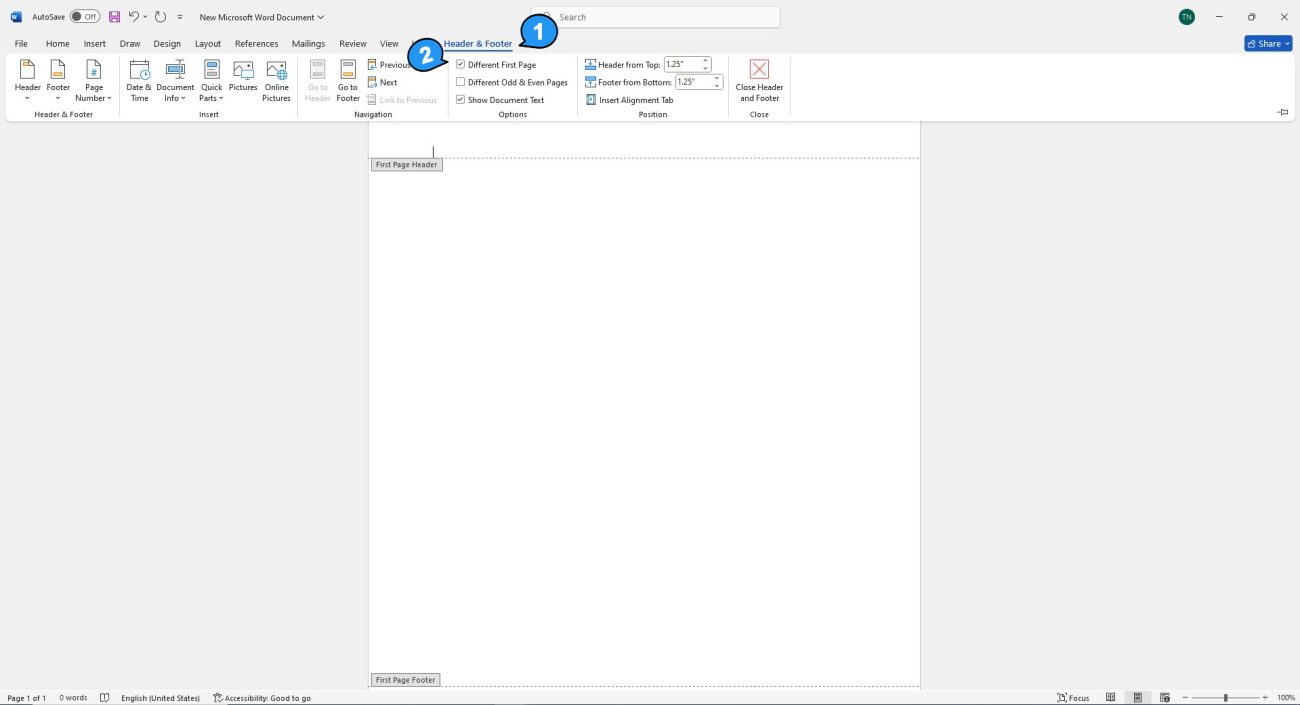
Then, adjust the header margins, so that you can use the full width of the page.
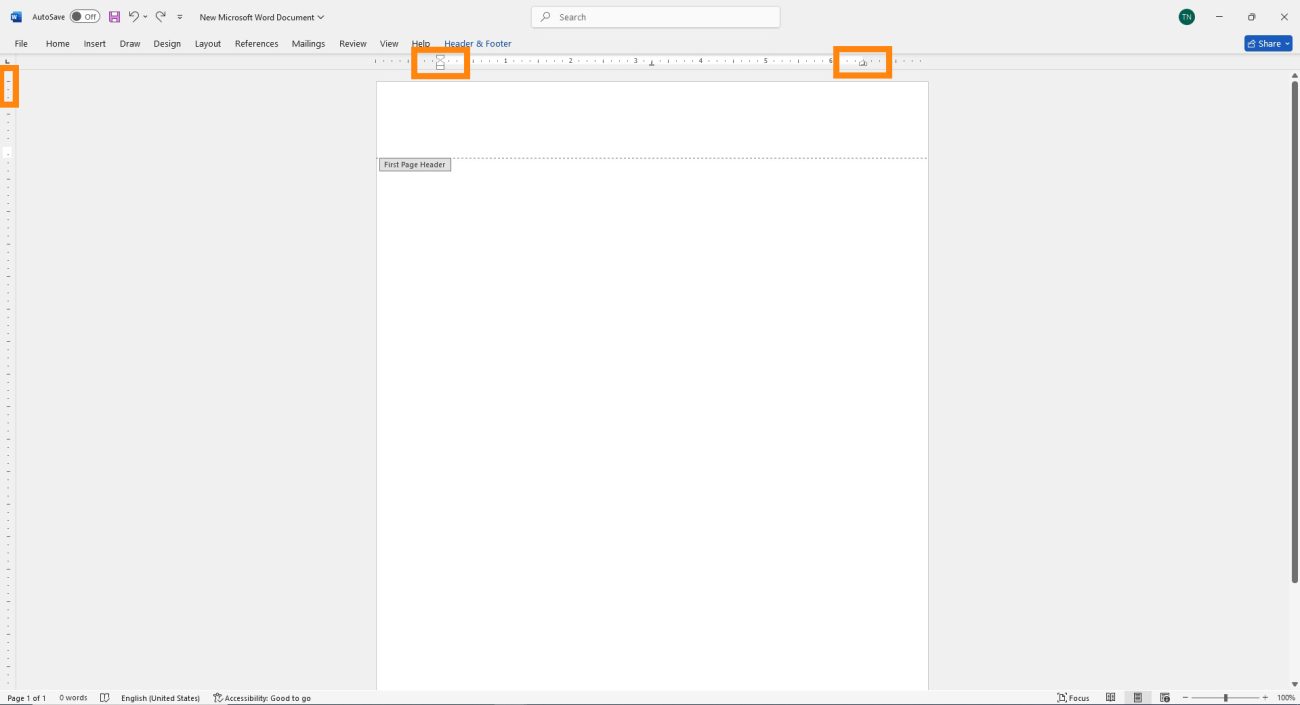
Next, design your letterhead within the header area. Once you’re finished, double-click anywhere below the header to return to the main body of the document, where you can start typing your letter.
Defining the Styles
Before I start typing any document, I always consider the different styles I want to use. For instance, in a letter, I’ll need the Normal style for the body text, right-aligned text for my address, the List Paragraph style for bullet points, and bold for emphasis, like the subject line.
While you can manually apply formatting to create your letter’s layout, using styles is more efficient and ensures consistency. With styles, you can apply multiple formatting changes to your text with just one click.
Modifying the Normal Style
Begin by adjusting the Normal style, focusing on the font type and paragraph spacing. Since Normal is the default style in Word, any changes you make will affect other styles as well. To modify it, right-click Normal in the Style Gallery on the Home tab, then click Modify.
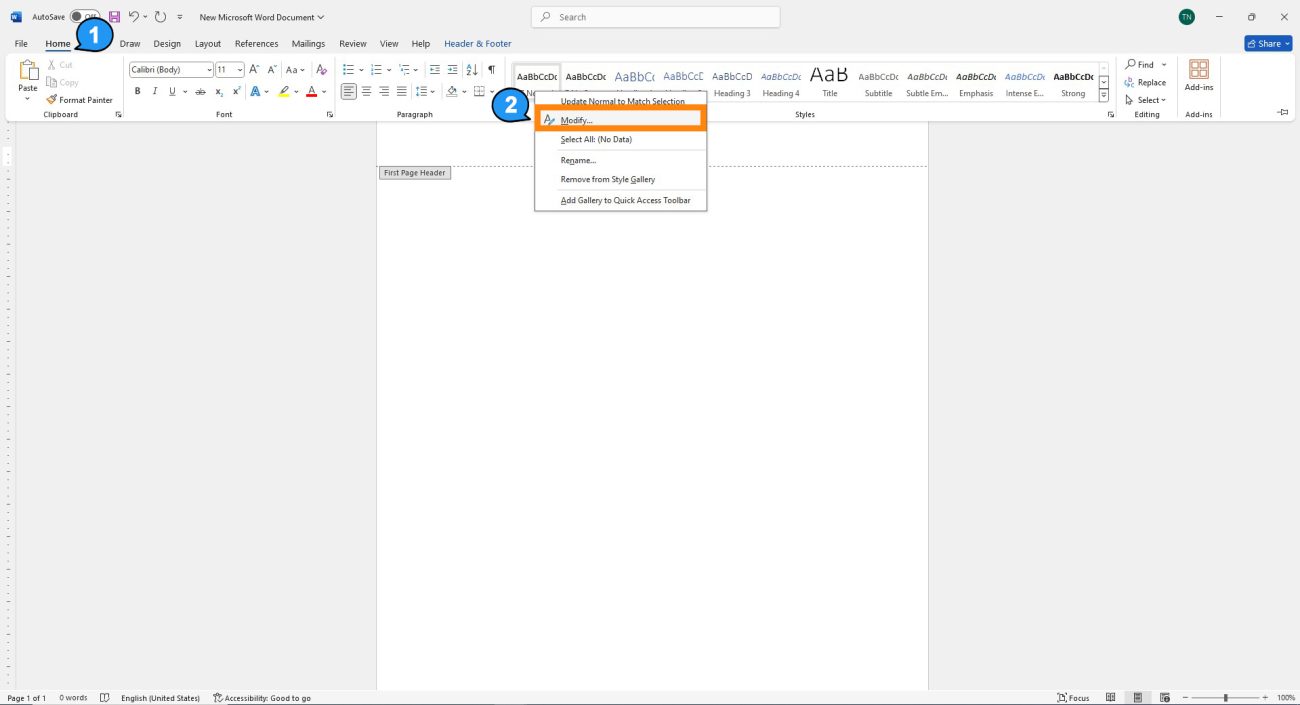
I prefer to use justified alignment (which makes the text align evenly with both the left and right margins), a sans-serif font (like Aptos, Calibri, or Arial), and a 12-point font size.
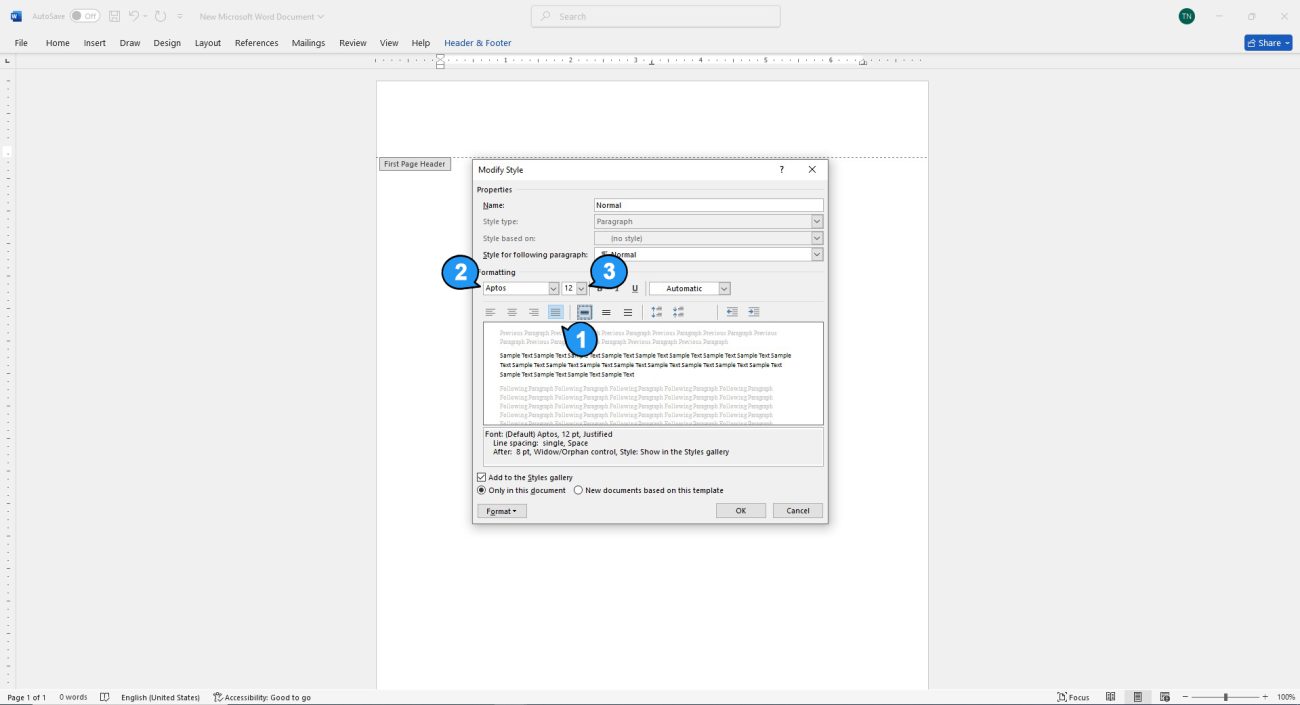
Next, click the Format drop-down menu at the bottom of the Modify Style dialog box, then select Paragraph.
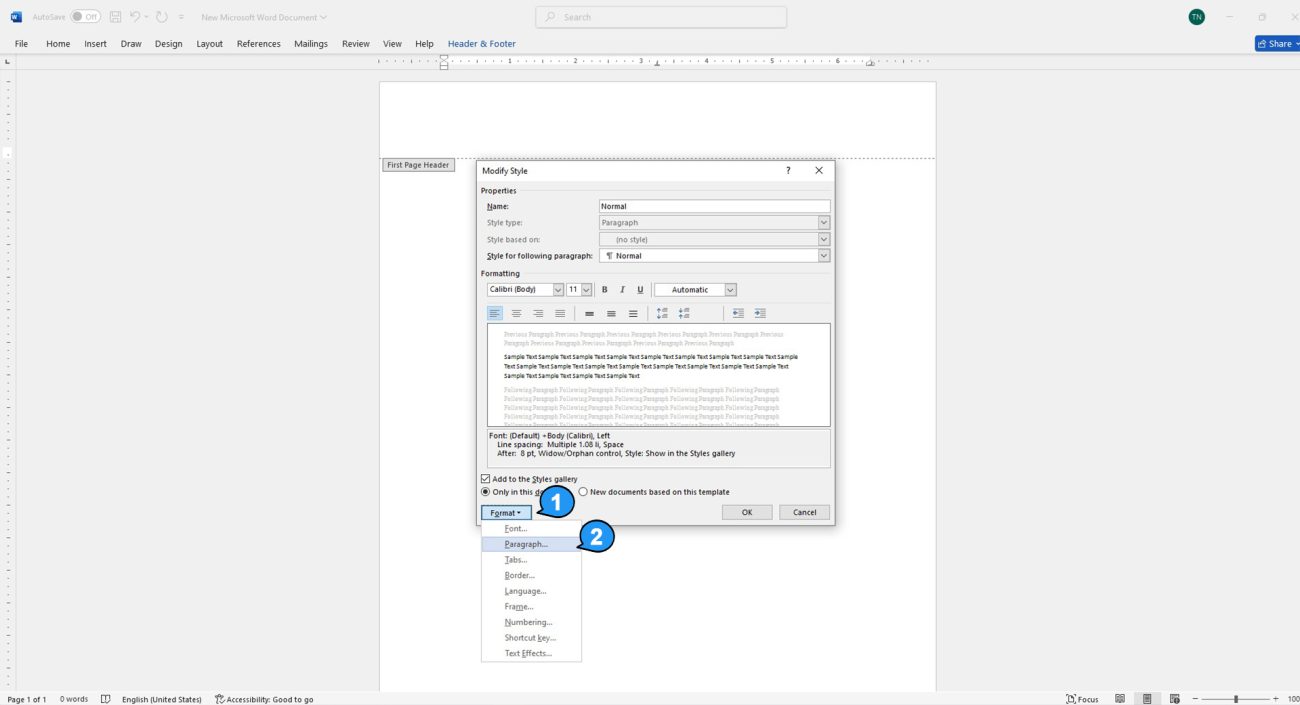
In the Paragraph settings, adjust Spacing After to match the font size you selected earlier. Then, choose your desired Line Spacing (I prefer single or 1.5 lines). Make sure the “Don’t add space between paragraphs of the same style” checkbox is unchecked. Finally, click OK twice to close both dialog boxes.
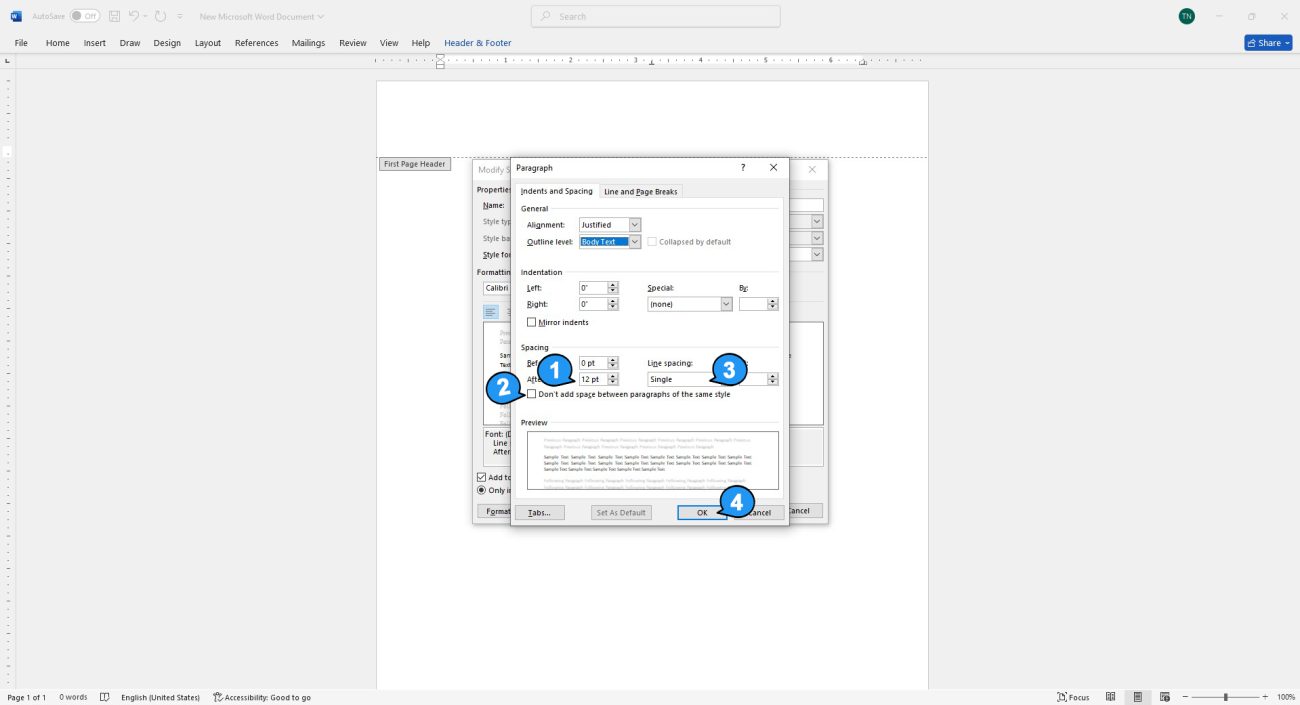
Now that you’ve set up your Normal style, you’re ready to create or adjust other styles. A quick way to do this is by pressing Ctrl+Alt+Shift+S to open the Styles Pane, where you can review and modify the existing styles.
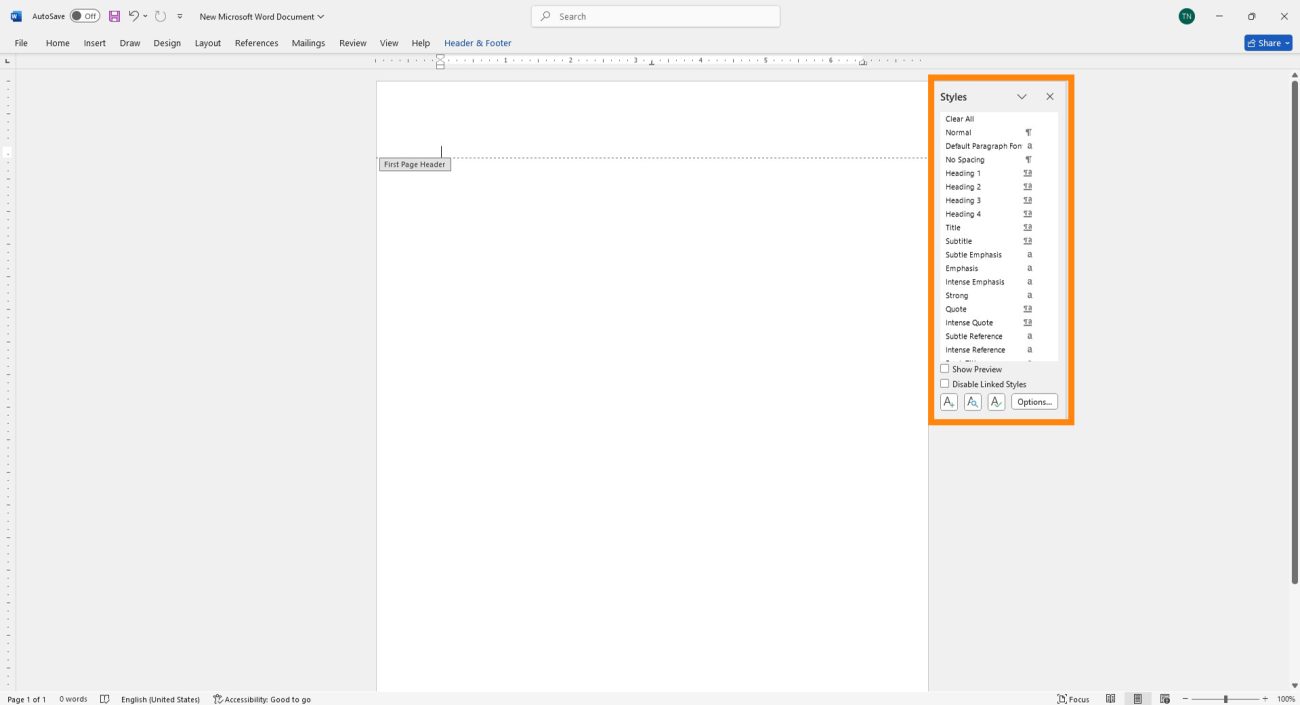
Alternatively, you can start typing your letter, using placeholders where needed. Press Ctrl+Shift+S to create a new style by typing a name for it and clicking Modify. For example, after typing my address, I pressed Ctrl+Shift+S and created a new style called MyAddress, with the text aligned to the right. I also made sure to check the “Don’t add space between paragraphs of the same style” option so the lines stay together.

Whenever I want to apply the styles I created to more text in my letter, I just place my cursor in the relevant paragraph and select the style from the Style Gallery.
Don’t start writing the main content of your letter just yet! Instead, create placeholders for your styles, and then move on to the next step.
Adding a Dynamic Date
Every letter needs a date, usually placed near the top—I like to put mine below my address. While you can type the date manually, if you plan to save your letter as a template, you can have Word automatically update the date each time you open the document.
To do this, place your cursor where you want the date to appear and select the style you want to use. Then, go to the Insert tab, and in the Text group, click Date and Time to open the Date and Time dialog box.
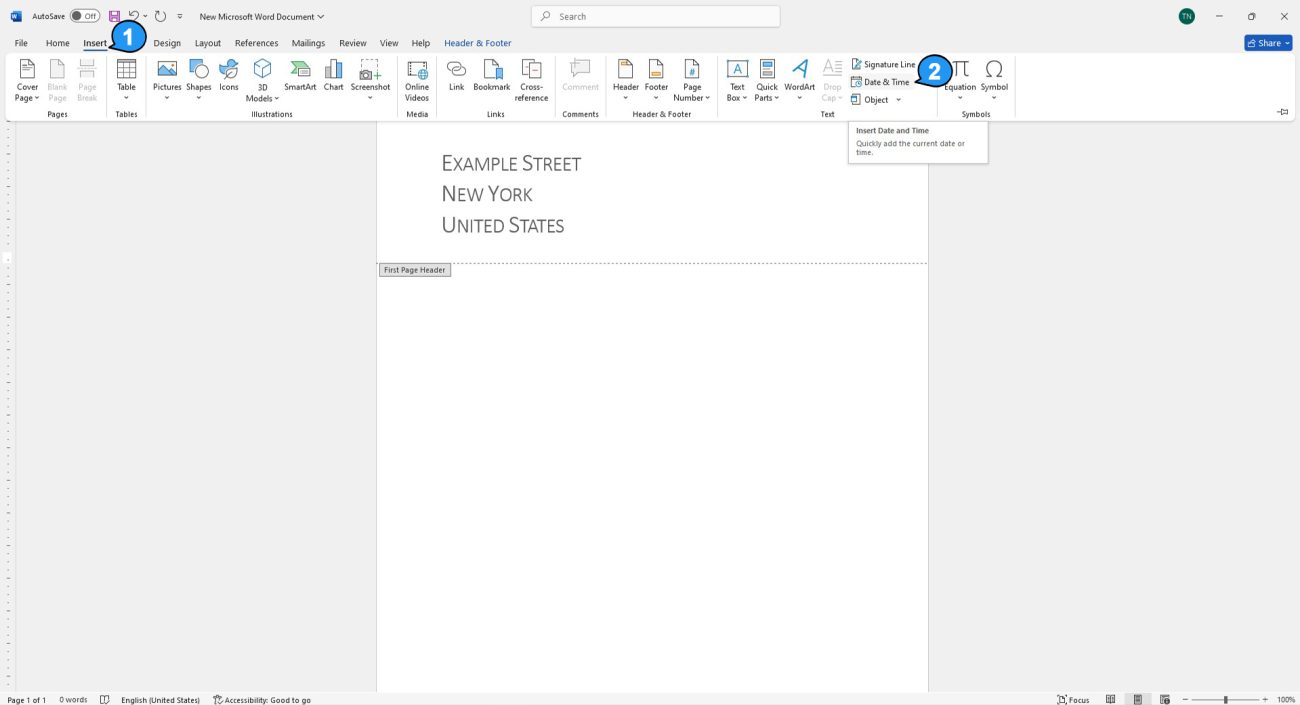
In the Date and Time dialog box, select the language and date format you prefer. Make sure to check the Update automatically box so the date refreshes each time you open the document, then click OK.
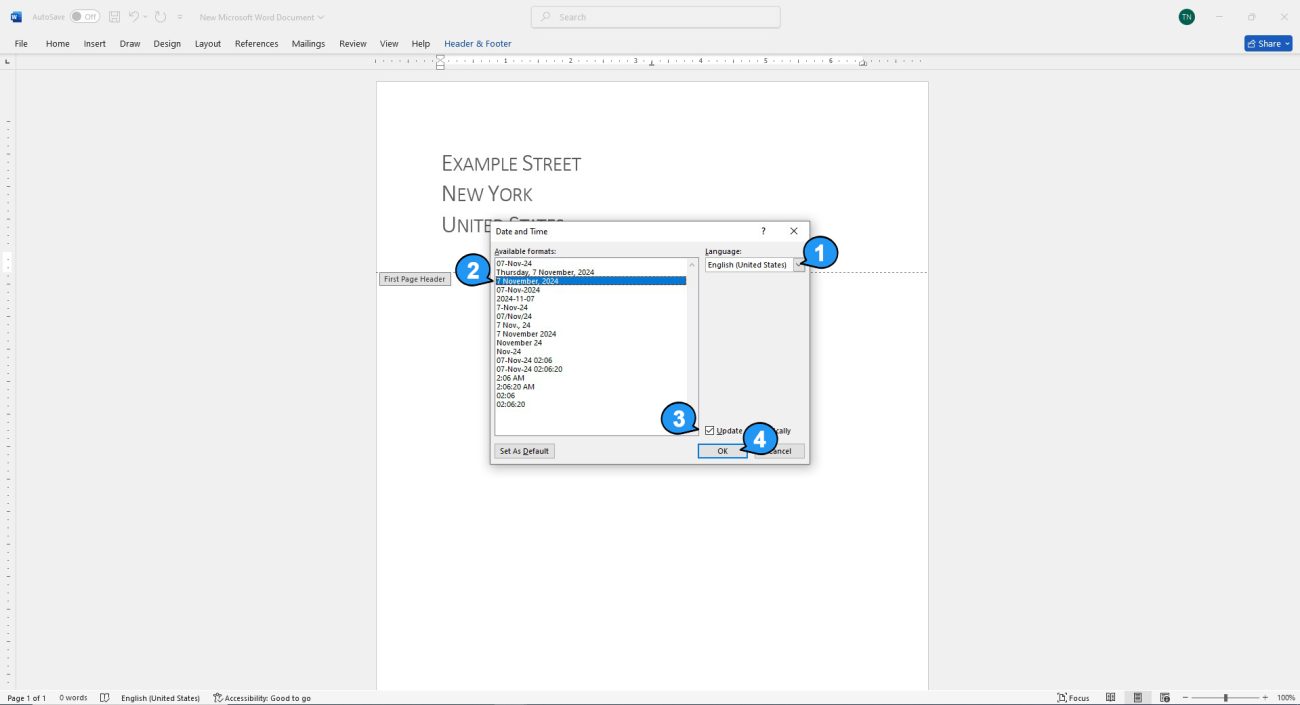
The date will appear as if you typed it manually, but it’s actually an automatic field that will update based on your computer’s current date.

Including a Signature
There are several ways to add a signature to a letter in Microsoft Word. One option is to use Word’s Signature Line tool to add a digital signature, though this is more suited for formal documents, like legal contracts, and requires a digital signature certificate. Another option is using Word’s drawing tool, but that can often look unnatural. To keep it simple and professional, I prefer to sign by hand on paper and then upload the signature to Word.
Start by using a black pen on white paper to create your signature. Take a photo of it with your phone, and then send the image to your computer. I use Microsoft Drop to transfer it quickly, but you can also use email or a cloud service like OneDrive.
Once you’re back on your computer, open Word, and go to Insert > Pictures > This Device to upload your signature.
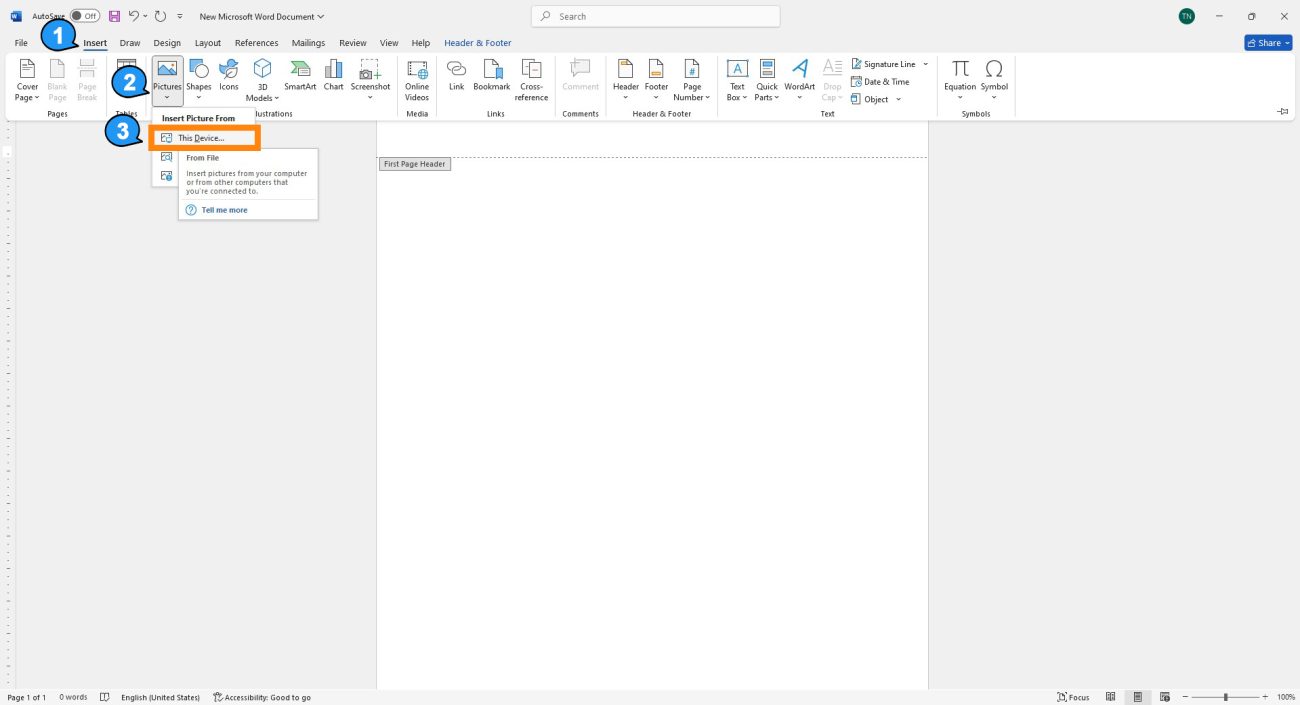
After inserting your signature, go to the Picture Format tab and use the Crop tool to trim any excess space around the edges of the image.
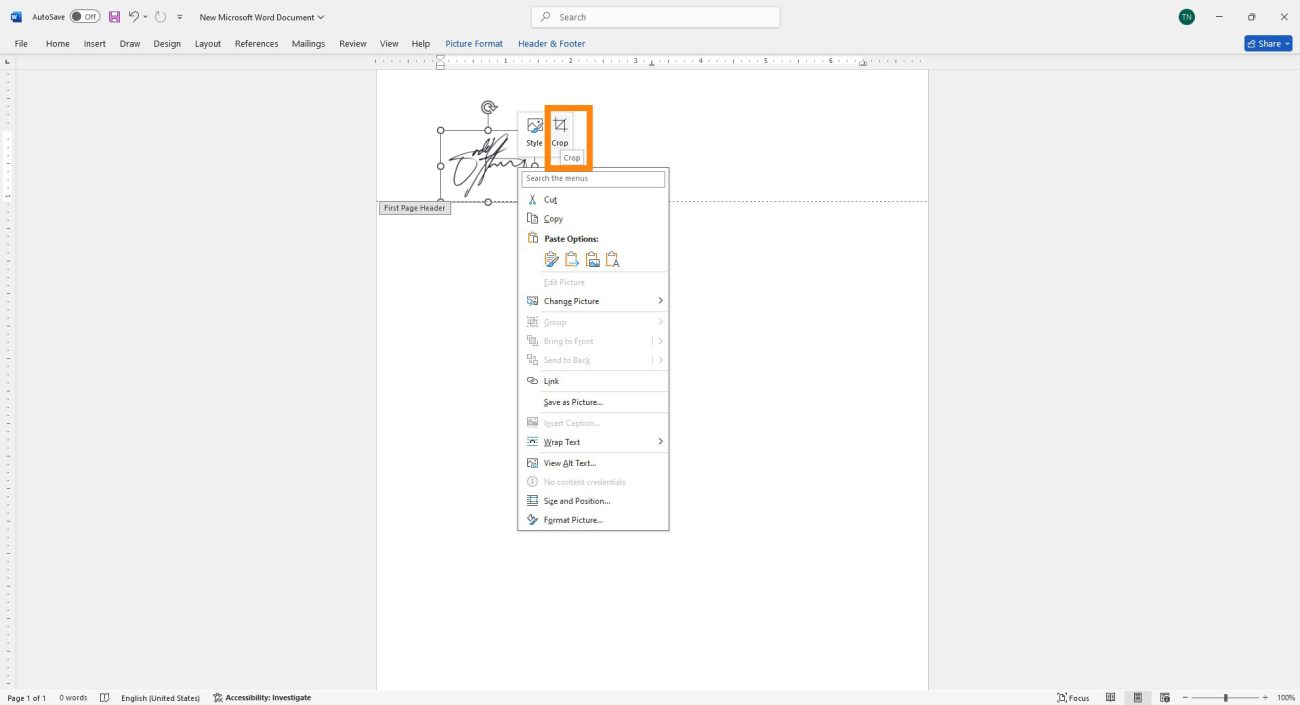
Next, use the Remove Background tool in the Picture Format tab to eliminate any unwanted colors or shading around the edges of your signature.
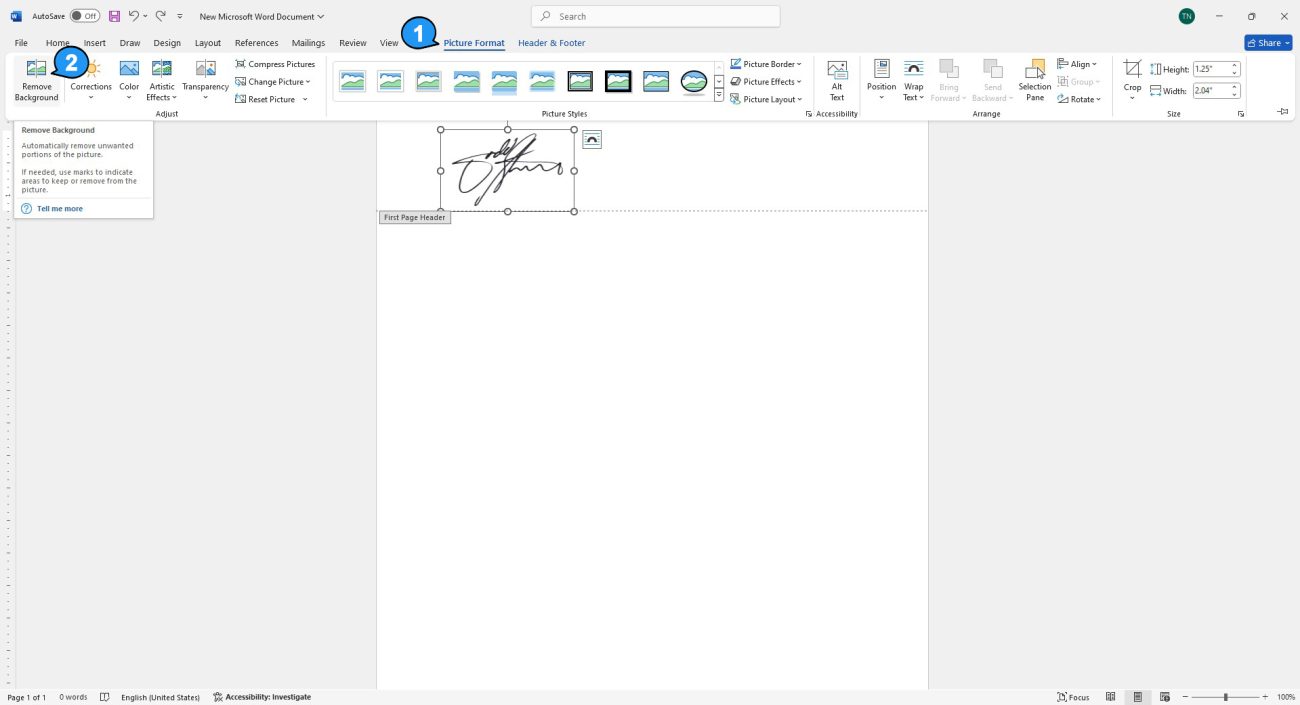
When you activate the Remove Background tool, Word will automatically highlight the areas to be removed in pink. You can further refine the selection by clicking Mark Areas to Keep and Mark Areas to Remove. Once you’re satisfied with the result, click Keep Changes.
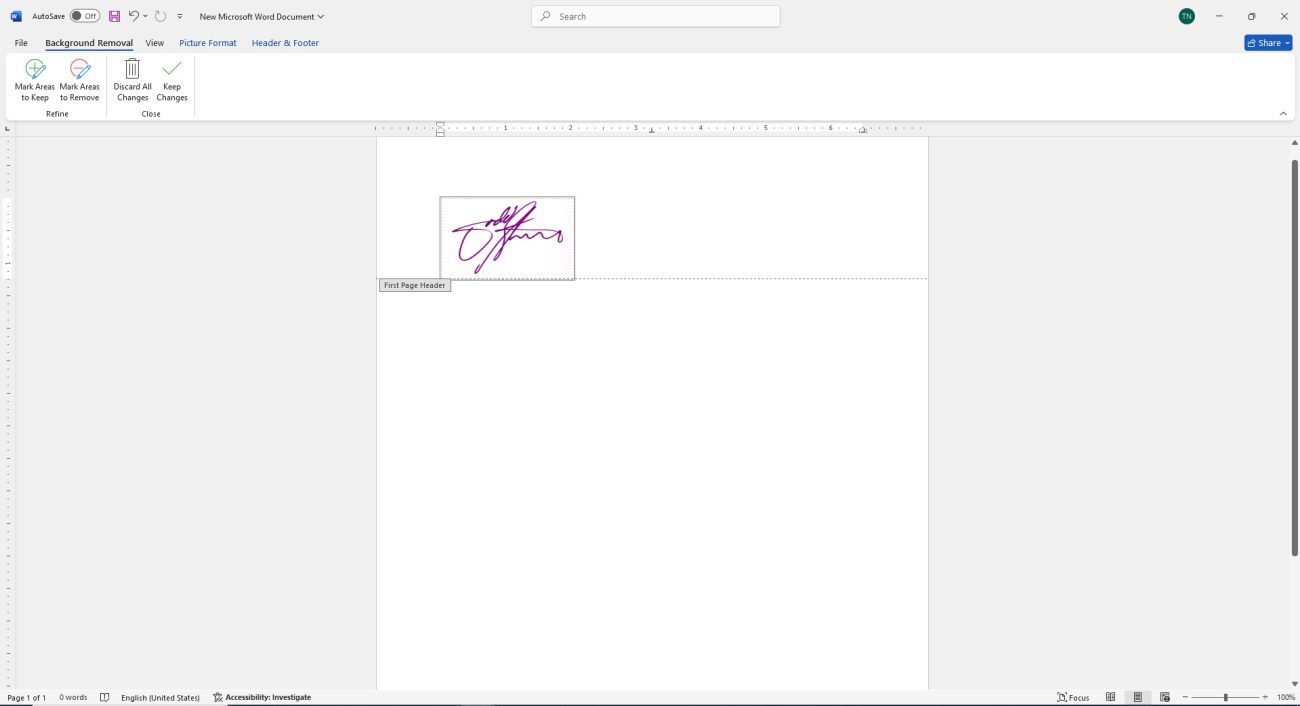
Save big onOfficelow-cost keys with immediate digital delivery!

